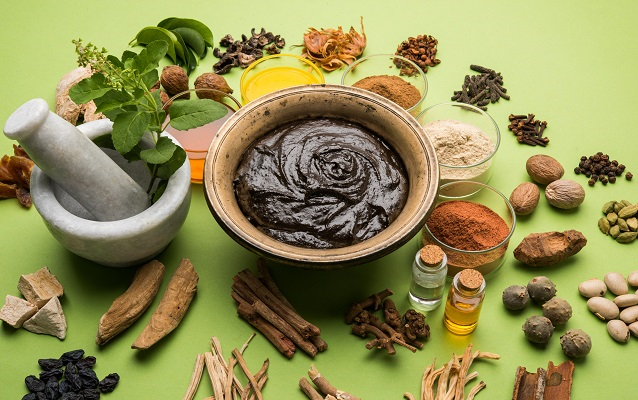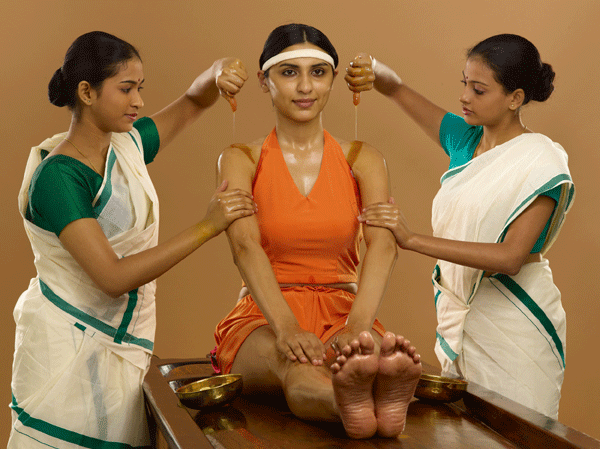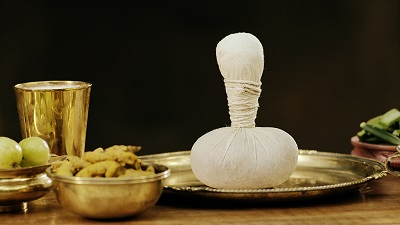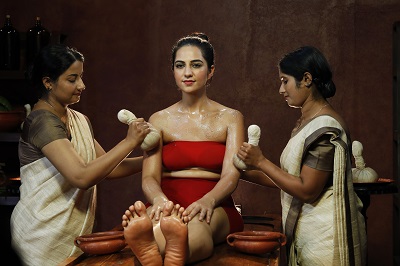
Ayurveda is the traditional medical system of India. It is recognized by the World Health Organization as a complete system of medicine.
Ayurveda can be used for treating diseases and for preventing diseases. The methods used by Ayurveda are:

Ayurveda is a part of the fourth Veda – Atharva Veda. Vedas are a group of four texts which include al the classical Indian knowledge accumulated over a period of more than 10000 years of history. The word “Ayurveda” (Sanskrit, m., आयुर्वेद) means “knowledge of life” and is The earliest history of Āyurveda medicine appears in the Atharva veda - between 5000 and 10000 BC.

Ayurveda can be used at any point of time for your requirements. However, the type, duration and aim of the treatment must be evaluated by an ayurveda doctor and confirmed to suit your current health status.
Ayurvedic centres which aim at selling treatment packages may urge you to select the treatment packages to suit your convenience, without the intervention of an authentic qualified ayurveda doctor. The significance of Ayurveda as a treatment system as opposed to other medical systems, is its capacity to give personal and customized treatments to each person at any given point of time. This means, that probably the treatment for your problem may vary at two different point of time.
If you have an ayurvedic medical consultation with qualified (university degree in Ayurveda from an Indian University – Bachelor in Ayurvedic Medicine and Surgery B.A.M.S. of 5&1/2 years duration in university) ayurvedic doctor, you will not need to have trial treatments.
The only way to find an ayurvedic treatment that is right for you is to be adviced by an ayurvedic doctor having the above qualification. Moreover, to receive the classic Panchakarma treatments, it must be adviced by the ayurvedic doctor, because Panchakarma can cause more damage than benefits if done under incompetent or non- professionals.
What does an ayurveda doctor find when you consult him before being adviced about your treatment?
The ayurveda doctor must determine your body constitution. This will give a default diet and habit pattern that you need to follow. But the diet and habit pattern determined by just your constitution, is only adviced to be followed when you are completely healthy. If you are under medication for any health problems, then, your diet, habits and ayurveda therapies should be modified accordingly.
Massages with oils for head, face and body, together with steam baths, massage with herbal powders, bathing with medicated cow´s milk, stream of oil or medicated buttermilk on the forehead to wash through the head etc are some of the typical ayurvedic treatments. Ayurvedic centres who aim profiting from ayurveda business will highlight that these treatments will let the tension and stress go away. However, this only happens if you were given the right type of treatment, which con only happen if the ayurvedic treatments were adviced and carried out under the supervision of an ayurvedic doctor (having the qualifications as mentioned above). If the ayurveda treatment was incorrect, then no health benefits will be felt and sometimes, uncomfortable adverse effects may happen.
The number of treatments included depend on the personal requirements of the individual and does not mean anything in terms of the quality of the treatment. More number of daily treatments, without evaluating the strength of the individual or his requirement may cause adverse effects.
Ayurveda treatments are done in phases. Each phase has their own theme. The number of daily treatments may vary according to the requirement of the individual. Each phase will have different number of daily treatments too.
None of the ayurvedic treatments can be complemented with serious physical activities. Physical activities like mild yoga and breathing exercises can be practiced during the initial days of the ayurveda treatments, which are however not adviced during the advanced days of a panchakarma programme.
Ayurveda treatments require you to abstain from exposure to wind, cold weather, sun, rain, dust, and strenuous physical activities. So even if the Ayurveda treatment facility has access to beach or swimming pool, they cannot be used by the clients undergoing the ayurveda programme, because such leisure activities can complicate the outcome of the ayurveda programme.



“International Ayurveda reference Organization-by professionally qualified Ayurveda Practitioners”